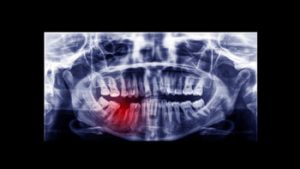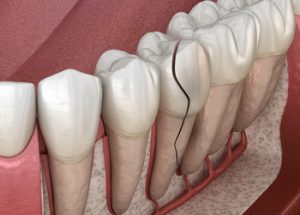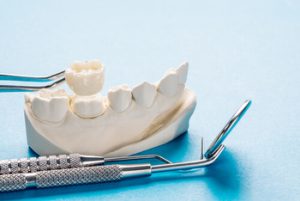Dealing with a badly decayed or infected tooth? A root canal could be the game-changer that saves your smile. While the root canal procedure is a common dental treatment, many patients worry about the recovery time and the healing process. In this article, we’ll explore everything you need to know about recovering from a root canal, offering a professional guide to ensure you feel prepared for your journey back to optimal oral health.
What Happens During a Root Canal Procedure?
Root canal therapy, or endodontic treatment, is designed to save a decayed or infected tooth by treating its inner layers.
The idea of a root canal might cause anxiety for some, but the entire procedure is generally straightforward and performed under local anaesthesia to ensure comfort. Here’s a step-by-step look at what happens during a root canal:
Diagnosis and Planning
 The process begins with a detailed examination of the affected tooth. Your dentist will:
The process begins with a detailed examination of the affected tooth. Your dentist will:
- Use X-rays to pinpoint the location and extent of the infection in the tooth root.
- Confirm whether the tooth pulp (the innermost layer of the tooth holding nerves and blood vessels) is infected or damaged.
This step ensures that the procedure targets only the infected or affected tooth.
Numbing the Tooth
Local anaesthesia is applied to the tooth and surrounding area. This step ensures you feel no severe pain during the dental procedure, making it as comfortable as possible.
Creating Access to the Pulp Chamber
To start the root canal procedure, the dentist carefully makes a small opening in the top of the tooth, providing access to the pulp chamber and root canals.
Cleaning Out the Infected Tissue
Using specific tools, the dentist removes:
- Infected pulp.
- Damaged nerves and blood vessels.
- Any infected tissue or debris within the pulp chamber and root canals.
The area is meticulously cleaned to eliminate bacteria and minimise the risk of future root canal infections.
Shaping and Disinfecting the Canals
The root canals are then shaped and disinfected to prepare them for filling. This step ensures the canals are smooth and free of any infected tissue.
Filling the Canals
After cleaning, the empty pulp chamber and root canals are filled with a biocompatible root canal-filling material, usually gutta-percha. This material seals the canals, preventing bacteria from re-entering and causing reinfection.
Temporary Filling
A temporary filling is placed on the treated tooth to protect it during healing, ensuring safety until a permanent crown or filling is added.
Final Restoration
At the follow-up visit, the dentist removes the temporary filling and places a permanent crown or filling, fully restoring the treated tooth’s strength, functionality, and appearance.
How Long Does the Procedure Take?
The procedure usually takes 1–2 visits, depending on the tooth’s condition and the complexity of the root canal. Molars, which have multiple roots, often take longer to treat compared to single-rooted teeth like incisors.
A root canal procedure is a valid way to save a natural tooth, eliminate tooth pain, and protect your oral health. With advancements in dental techniques, the treatment is relatively quick, comfortable, and highly successful.
What Happens After a Root Canal? Here’s What You Need to Know
Recovering from a root canal treatment is usually straightforward, especially when you follow your dentist’s post-treatment instructions. While the procedure eliminates the infection and saves your natural tooth, some discomfort and sensitivity are normal as your tooth and surrounding tissues begin the healing process. Here’s what you can expect after undergoing a root canal treatment:
 Immediate Post-Treatment Effects
Immediate Post-Treatment Effects
- Mild Pain and Sensitivity: Experiencing mild sensitivity or discomfort in the treated tooth and surrounding area is completely normal. This is due to inflammation in the soft tissue as your body heals.
- Numbness: The local anaesthesia used during the procedure may linger for a few hours, leaving the area numb.
- Temporary Filling: If a temporary filling is placed, you may feel a slightly uneven surface until the permanent restoration is finished.
Managing Discomfort
Post-treatment discomfort is usually minimal and can be managed with:
- Over-the-Counter Pain Relievers: Medications like ibuprofen or paracetamol help alleviate mild pain or inflammation.
- Cold Compress: Applying a cold compress to the cheek near the treated tooth can reduce swelling and soothe discomfort.
- Avoiding Hard or Chewy Foods: Stick to soft foods to prevent unnecessary pressure on the treated tooth.
Returning to Normal Activities
Most patients can continue their daily activities on the same day as the root canal procedure. However, avoid strenuous activities if you’re feeling fatigued or sore.
Healing Timeline
- First 24–48 Hours: The most sensitive period post-treatment. You may feel mild discomfort when biting or chewing.
- 3–5 Days: Tenderness and sensitivity usually subside significantly during this time.
- 1–2 Weeks: Full recovery for most patients. If a permanent crown is required, it’s typically placed during this time.
If you feel severe pain, persistent swelling, or signs of infection, contact your dentist immediately.
Permanent Restoration
The final step in your root canal recovery is placing a permanent crown or filling. This step strengthens the tooth and protects it from future damage or decay.
Tips for a Smooth Healing Process
Healing after a root canal can be straightforward with the right approach. By making small changes to your daily routine and following your dentist’s advice, you can ensure a hassle-free recovery while safeguarding your treated tooth. Here are some helpful tips to guide you through the process.
Follow Post-Treatment Instructions
Your dental professional will provide guidelines tailored to your specific case. Adhering to these instructions is crucial for proper healing.
Avoid Hard and Chewy Foods
Stick to a soft diet like soups, mashed potatoes, and yoghurt during the initial recovery phase. Avoid chewy foods or anything that could irritate the treated tooth.
Maintain Good Oral Hygiene
Brushing and flossing teeth regularly is vital to prevent further infections. Opt for a soft-bristled toothbrush to avoid irritating the treated area.
Schedule a Follow-Up Visit
A follow-up visit ensures the treated tooth is healing properly and allows the dentist to place a permanent crown or filling if needed.
Why Choose a Root Canal Over Tooth Extraction?
 When faced with the decision between undergoing a root canal or a tooth extraction, many patients wonder which option is better. While tooth extraction may seem simpler or quicker, a root canal offers several compelling advantages. Preserving your natural tooth is basically always the best choice for long-term oral health and overall well-being. Here’s why root canal treatment is the preferred option over tooth extraction in most cases:
When faced with the decision between undergoing a root canal or a tooth extraction, many patients wonder which option is better. While tooth extraction may seem simpler or quicker, a root canal offers several compelling advantages. Preserving your natural tooth is basically always the best choice for long-term oral health and overall well-being. Here’s why root canal treatment is the preferred option over tooth extraction in most cases:
Preserves Your Natural Tooth
A root canal preserves the affected tooth by removing the infected pulp tissue and restoring its functionality. Keeping your natural tooth:
- Maintains the structural integrity of your jawbone.
- It prevents the shifting of neighbouring teeth, which can occur after a tooth extraction.
- Helps you chew and speak naturally without the need for prosthetics.
Avoids Bone Loss
When a tooth is removed, the jawbone in the area gradually deteriorates due to the lack of stimulation, potentially altering the structure of your face and leading to a sunken appearance. Opting for root canal therapy preserves your natural tooth, eliminating the need for replacement options like dental implants or dentures to address this issue.
Less Expensive in the Long Run
Although the upfront cost of a root canal may seem higher than tooth extraction, it’s often more cost-effective in the long term. Tooth extraction often necessitates replacement options, such as:
- Dental implants.
- Bridges.
- Dentures. These solutions come with additional costs for placement and ongoing maintenance, whereas a root canal often requires only a crown to restore the treated tooth.
Minimises Oral Health Complications
Tooth extraction can lead to a chain reaction of dental issues, including:
- Misaligned teeth due to shifting.
- Difficulty chewing certain foods.
- Increased wear and tear on remaining teeth. Root canal treatment fixes the root cause of the problem—an infected pulp—without creating new issues.
Provides Pain Relief and Restores Function
Root canal treatment aims to eliminate the pain caused by an infected tooth while retaining its functionality. Extracting a tooth, on the other hand, leaves a gap that may require an artificial replacement to restore proper chewing and biting abilities.
Faster Recovery
While tooth extraction is a simpler procedure, the healing process and adjustment to a missing tooth or dental prosthetics can take longer. Root canal recovery is usually quick, with most patients returning to their daily normal activities within a few days.
Supports Overall Oral Health
Extracting a tooth leaves behind a gap that can harbour bacteria and lead to oral health complications. A root canal ensures that the tooth is sealed and protected, reducing the likelihood of further infections or damage.
Recommended by Dental Professionals
Dental organisations like the Australian Dental Association often recommend saving a natural tooth whenever possible. A root canal is a tried-and-tested procedure that aligns with best practices in preserving dental health.
When Tooth Extraction May Be Necessary
While root canal therapy is often the first choice, there are instances where tooth extraction is unavoidable:
- The tooth is badly destructed or decayed to be restored.
- The tooth has a fractured root or compromised structural integrity.
- There is insufficient bone to support the tooth or restoration.
In these cases, your dentist will guide you through replacement options like dental implants to maintain your oral health.
Common Concerns During Recovery
What If My Tooth Hurts After a Root Canal?
It’s normal for the tooth and surrounding area to feel tender initially. However, if the tooth hurts significantly or pain persists beyond a few days, it may indicate a missed root canal or root system complications.
How Long Does It Take to Fully Heal?
Complete healing depends on the individual and the complexity of the dental procedure. Most patients experience full recovery within two weeks. For complex cases, recovery may take longer.
Can I Avoid Root Canal Treatment?
While avoiding root canal treatment may seem appealing, untreated tooth infections or fractured roots can lead to severe complications, including abscesses or the need for more extensive dental surgery.
When to Contact Your Dentist
Seek professional advice if you notice:
- Persistent or severe pain.
- Signs of root canal infection, such as swelling or fever.
- A loose tooth or issues with the dental crown.
Prompt action ensures a smooth recovery and prevents complications.
How to Ensure Long-Term Success After a Root Canal
A root canal treatment is a highly effective approach to save a natural tooth and restore its function. However, the long-term success of the treated tooth depends on proper aftercare and following your dentist’s recommendations. With the right steps, you can protect your treated tooth and enjoy a healthy smile for years to come.
Prioritise the Final Restoration
Completing the tooth’s restoration is a vital step after a root canal. In most cases, your dentist will suggest a dental crown to strengthen and protect the treated tooth.
Why Dental Crowns Are Important
- Reinforces the Tooth: A root canal weakens the tooth, as the removal of infected pulp eliminates its natural blood supply. A crown restores its durability.
- Prevents Fractures: Without a crown, the tooth is more susceptible to cracking or breaking under pressure.
- Seals the Tooth: A crown ensures the treated tooth remains free from bacteria and further decay.
- Improves Function and Appearance: Crowns help the tooth regain its chewing functionality and blend seamlessly with your natural teeth.
Address Teeth Grinding or Clenching
Teeth grinding (bruxism) can wear down your dental crown and cause damage to the root canal-treated tooth. If you grind your teeth:
- Discuss getting a custom mouthguard to wear at night with your dentist.
- Manage stress, as it’s often a contributing factor to grinding.
Protect Your Teeth During Sports
If you play contact sports or activities where there’s a risk of facial injury, wear a mouthguard to protect your treated tooth and dental crown.
Follow a Balanced Diet
Eating a nutrient-rich diet supports your overall oral health. Include foods rich in calcium, phosphorus, and vitamin D to strengthen your teeth and surrounding tissues.
Monitor for Unusual Symptoms
While root canal therapy is highly successful, it’s essential to watch for signs of potential issues:
- Persistent Pain or Swelling: These may indicate reinfection or problems with the dental crown.
- Sensitivity to Pressure: This could be due to an improperly placed crown or other complications.
- Loosening of the Crown: If your crown feels unstable, contact your dentist immediately for adjustments.
Avoid Smoking and Excessive Alcohol Consumption
Smoking and excessive alcohol can compromise your immune system, delay healing, and raise the likelihood of complications.
Final Thoughts
Root canal recovery time is manageable with the proper care and guidance from your dentist. By addressing the infected tooth and following post-treatment instructions, you can protect your natural tooth and enjoy long-term oral health benefits.
If you’re considering a root canal or experiencing tooth pain, don’t delay seeking professional advice. Contact Beyond Infinity Dental today at (02) 8806 3799 to book your consultation.
Note: Any surgical or invasive procedure carries risks. Before proceeding, you should seek a second opinion from an appropriately qualified health practitioner.
References
- Cleveland Clinic. (n.d.). Teeth sensitivity. Retrieved from https://my.clevelandclinic.org/health/symptoms/10954-teeth-sensitivity
- Medical News Today. (n.d.). Root canal treatment: What you need to know. Retrieved from https://www.medicalnewstoday.com/articles/142780
- GoodRx. (n.d.). Popular over-the-counter pain relievers. Retrieved from https://www.goodrx.com/conditions/pain/popular-over-the-counter-pain-relievers
- Healthline. (n.d.). Tooth extraction: Procedure, aftercare, and risks. Retrieved from https://www.healthline.com/health/tooth-extraction
- Australian Dental Association. (n.d.). Retrieved from https://ada.org.au/









